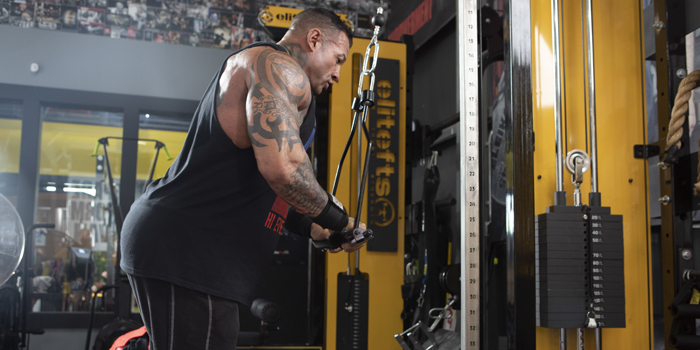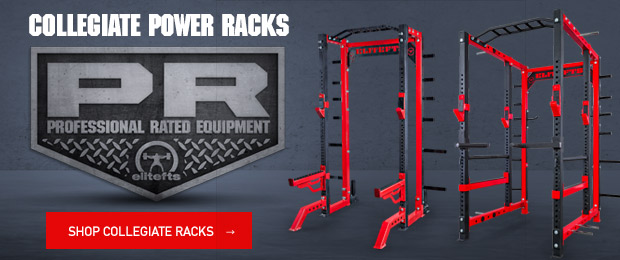
I need to preface this article right out of the gate. I'm not your typical "lifter." I don't fit the mold that many featured writers on elitefts do.
I exercise to stay healthy, mobile, and strong, but I don't pay too much attention to how much weight I move around the gym. In fact, I spend most of my time exercising with a focus on the fringe, which is precisely why I'm writing this article.
Let me also add that I'm not against conventional lifting or programming. I do variations of pushing, pulling, squatting, etc.; I simply don't use them to anchor my health and programming.
What I'm about to write somewhat goes against traditional wisdom, but I ask that you suspend your disbelief for a minute and let me paint you a picture.
The Programming Merry-Go-Round
You go to the elitefts archives and dig up an old-school conjugate program from Dave or Harvey. It has all the standard elements, like squats and deadlift progressions.
Your first few weeks fly by, and you feel strong and powerful. But somewhere along the way, things don't "feel right." Maybe your knees are starting to hurt, or your back is achy. So, you sprinkle in accessory movements and warm-ups to improve your main lifts.
Things start to feel better, so you load up on your squats and deadlifts until you inevitably end up in the same place you started: achy and beat up.
So, you return to your longer warm-ups and accessory movements until you feel better.
Rinse and repeat.
Most people keep riding that programming merry-go-round, not realizing the exercises and movements they deemed "accessories" to their program are probably the things they need just as much as loading squats and deadlifts.
Higher-Level Thinking
I'm writing this for elitefts, so it should go without saying that I have immense respect for thought leaders and trainers like Dave and Harvey. But they can't coach every one of you in person to be the best lifters and strength athletes you can be.
So, I urge you to take the initiative to learn more about your body and its structure, limitations, weaknesses, etc.
And to do that, you need to elevate your game and look at the bigger picture.
RECENT: Why Conjugate Didn't Work For You
Your Prime Movers Are Fundamentally Rotational
Prime movers are muscles that produce the most force and often control most of a joint's action. For example, the gluteal muscles extend the hip, making them prime movers for hip extension. However, prime movers are also often responsible for how a joint can rotate. So, for instance, the gluteal muscles are prime movers in hip internal and external rotation.
Most prime movers in traditional lifts come from rotational joints (e.g., the hips and shoulders). Thus, when we think about training those joints, we should employ strategies and programming that maximize rotational inputs.
Here's a more clear example.
Often, band walk variations get programmed for accessory glute work because they help strengthen hip abduction (i.e., pull the hip away from the body). However, the gluteus medius, considered the prime mover for hip abduction, is a strong modulator of hip internal rotation (1). So, when hip internal rotation is lacking or limited, improving the glute med's extensibility (i.e., its "stretchiness") is crucial.
Why? Because rotation is fundamental to all hip functions, including planar motion (e.g., hip extension). And when rotation is inhibited or missing in a joint, especially the hip, all other planar movements are likely to be impacted as well.
Simply put, the better your hip rotates, the better it will extend or adbuct. Conversely, a hip with good abduction doesn't necessarily have good internal rotation. So, you must program your accessory work from the inside out.
Train Rotation First
The shoulder is an easier example because most people include rotational inputs into their shoulders whether they realize it or not.
Many programs emphasize exercises like band pull-aparts and face pulls because they establish good rotator cuff stability and shoulder external rotation. However, there's typically a lack of focus on internal rotation of the shoulder, which is interesting because it's just as essential to shoulder health as any external rotation exercise.
So, everyone's goal should be to improve the rotational capacity of major joints like the shoulders and hips. But, taking things one step further, joints of the extremities also have rotational qualities that are worth training (e.g., elbow supination/pronation, ankle inversion/eversion, etc.)
Your programming and accessory movements should tie directly to improving the rotational qualities of the joints you use in your compound lifts. Doing so will open the door to more possibilities (e.g., less pain, more neural drive, etc.)
In Practice
The truth is, I can't tell you what accessories you need for your body or program because you're not standing in front of me. But I can point you in the right direction.
First, I recommend you spend time understanding how all of your joints work. If you go to our YouTube channel, you'll find a playlist going over CARs (controlled articular rotations); this will give you a better idea of how your body moves and independently articulates specific joints, like the hip video you see below.
Hip CARs
YouTube
From there, you can load, stretch, or intensify each movement depending on where you need more attention.
For instance, if you're looking to fully train the rotational qualities of the shoulder (glenohumeral joint), swimmers might be a sound option.
Shoulder Swimmers
YouTube
If you want to engage and isolate hip rotation, you can do things like lift-offs.
Hip Internal Rotation Passive Range Lift-Off
YouTube
Hip External Rotation Passive Range Lift-Off
YouTube
Lastly, learning how to stretch and roll your ankle will help tremendously if you want better ankle mobility.
Article: Better Ankles Equals Better Conventional Deadlifts
Again, we're looking for ways to directly train the rotational qualities of a joint without adding in extraneous movement. Doing so will pay dividends in how your body feels and how much weight you lift during your compounds.
In Closing
Look, I understand that some people want to throw triceps extensions and lying hamstring curls into their program for fun; I do the same thing. But 80% of your accessory work should be guiding and significantly improving your body and compound lifts. And it should come from a thorough understanding of your limitations and weaknesses, not just because someone on the internet told you to do band walks to improve your glute function.
I'll leave you with a quote, American History X style.
"Want to put an exercise in a program? You must be able to quickly and easily justify its inclusion." -Eric Cressey.
You can only justify your accessory work by truly knowing what you need. So if you're looking for guidance, leave a comment, and I'll see what I can do to help.
References

Brian Murray has spent the last 13 years fine-tuning his skills as a coach and movement specialist to help people move and feel better than ever before. He has worked with and learned from some of the industry's most revered coaches and personal trainers, like Adam Bornstein and Justin Kavanaugh. He has held multiple certifications through Functional Range Conditioning (FRC), Precision Nutrition (Pn2), and ONNIT. In 2018, Brian founded Motive Training, a personal training organization that teaches clients how to move with purpose, ensuring they have a well-rounded, functional body. You can find Motive Training in Grand Rapids, MI, and Austin, TX.













